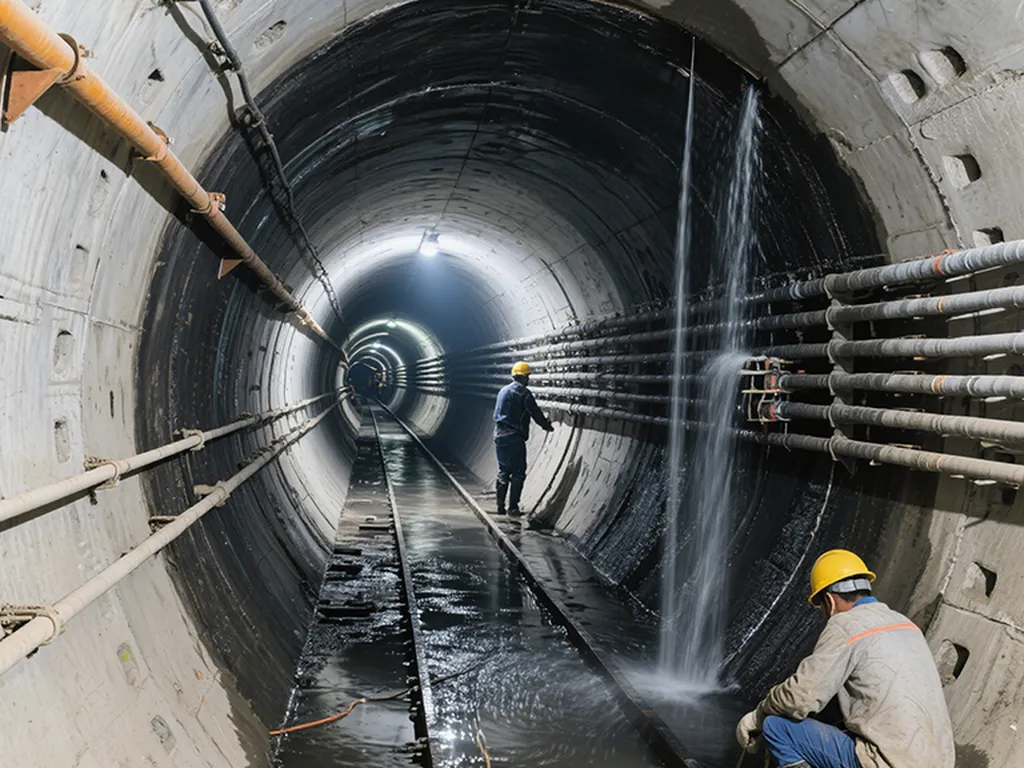In the bustling world of underground construction, a groundbreaking development is poised to revolutionize the way we build subway stations. Researchers, led by Shupeng Wang from the Key Laboratory of Structural Health Monitoring and Control at Shijiazhuang Tiedao University in China, have introduced an innovative steel connector mechanical system for fully prefabricated subway stations. This advancement not only enhances assembly efficiency but also ensures structural reliability, addressing two critical challenges in the widespread adoption of prefabricated structures.
The study, published in *Engineering Science and Technology, an International Journal* (translated from its original Chinese title), delves into the intricate details of this new system. Wang and his team developed a comprehensive evaluation methodology that integrates assembly process simulation with structural performance assessment. Through scaled model tests that combined static and cyclic pushover loading, they demonstrated that the proposed connector successfully balances assembly efficiency with structural reliability. “The connector shows minimal displacement during assembly and substantial load-bearing capacity in service conditions,” Wang explained, highlighting the dual benefits of the system.
One of the most compelling aspects of this research is its potential to transform the energy sector. Prefabricated structures offer significant advantages in terms of speed, cost, and sustainability, making them an attractive option for large-scale infrastructure projects. The ability to ensure reliable connection performance while maintaining assembly efficiency is a game-changer for the industry. “This system not only meets the stringent precision requirements for mechanical connectors during installation but also exhibits excellent seismic performance,” Wang added, underscoring the system’s robustness.
The prefabricated system’s ability to control yield mechanisms, where localized damage at frame corners protects critical joints, is particularly noteworthy. This feature ensures structural integrity up to interstory drift ratios exceeding the limit of 1/250 specified by the Chinese code GB 50909–2014. Such advancements are crucial for enhancing the safety and longevity of underground structures, particularly in seismic zones.
The implications of this research extend beyond the immediate benefits of prefabricated subway stations. The systematic evaluation framework developed by Wang and his team provides a validated technical solution that could be applied to various types of underground construction. This could lead to more efficient and reliable building practices across the board, ultimately driving down costs and improving project timelines.
As the construction industry continues to evolve, the adoption of prefabricated structures is likely to accelerate. The research conducted by Shupeng Wang and his team represents a significant step forward in this direction. By addressing the critical challenges of connection performance and assembly efficiency, they have paved the way for more innovative and sustainable construction practices. The findings of this study not only provide a technical solution but also offer a comprehensive evaluation framework that could shape the future of underground construction.
In the words of Wang, “This research provides both a validated technical solution and a systematic evaluation framework for advancing prefabricated underground construction.” As the industry looks to the future, the insights gained from this study will undoubtedly play a pivotal role in shaping the next generation of infrastructure projects.

